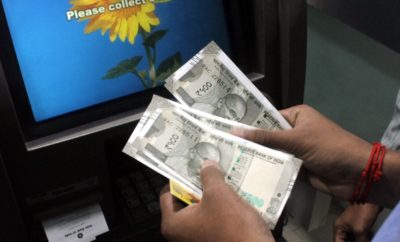Immigration
10-Year Wait for Indians Seeking Employment-Based Green Card: Report

Representational Image
Photo: Bigstock
Around 112,000 people were on the waitlists for all employment-based green cards combined as of November 2017, according to a recent report.
The waiting period for skilled Indian workers who are EB-3 applicants is more than 10 years, according to a report from the Republican Policy Committee of the United States. The number of green cards issued to people directly based on their skills, experience, and education and on the needs of the employers in the United States is closer to 6 percent of the overall total, the report that was released on Feb. 6 said.
“More than 80 percent of all employment-based green cards were issued to people already in the country who were changing from a temporary visa to permanent residence – a process called adjustment of status,” it said.
According to the report, as of November 2017, there were around 112,000 people on the waitlists for all employment-based green cards combined. Although a preference category is not oversubscribed, people of some nations may have to wait as there is a limit of 7 per cent per country to issue green cards. This limit affects people from countries that send a lot of people to the United States, such as China, India, and the Philippines.
“The Immigration and Nationality Act (INA) limits nationals of any single country to 7 per cent of all family- and employment-based green cards issued annually,” said the report. It added that immigrants who get an employment-based green card may bring their spouses and minor children to the United States. These “derivative” entrants are not counted in the green card limits.
So, when an employment-based green card preference is oversubscribed, probable immigrants are put on a waitlist.
According to the report, in 2016, the United States issued almost 1.2 million green cards. This granted immigrants legal permanent residence in the United States and gave them the opportunity to apply for citizenship in the future.
Around 800,000 green cards, which is close to 70 per cent of the total, went to people immigrating to the United States based on having relatives here.
“In contrast, about 140,000 green cards, less than 12 percent, were issued to immigrants for employment reasons, based on their skills, experience, and education and on the needs of U.S. employers. Of these 140,000 employment-based green cards, more than half went to the spouses and children of the primary applicants,” the report said.
The INA has provided five major categories, known as “preferences” of green cards, for people to immigrate to the United States for employment reasons. These are EB-1 Visas to EB-5 Visas.
Many more people get temporary visas for employment every year as compared to receiving green cards. In 2016, about 530,000 people got H-1B, H-2A, and H-2B visas, including spouses and children. More than 750,000 temporary employee-based visas were issued across all categories.
Supporting the United States President Donald Trump’s proposal to implement a “merit based” immigration system in the country, a large congregation of Indian Americans staged a march outside the White House on Feb. 3.
The White House announced on Jan. 11 that a legislation pushing for merit-based immigration and increasing the allotment of green cards by 45 per cent annually has been introduced in the House of Representatives in the United States.



